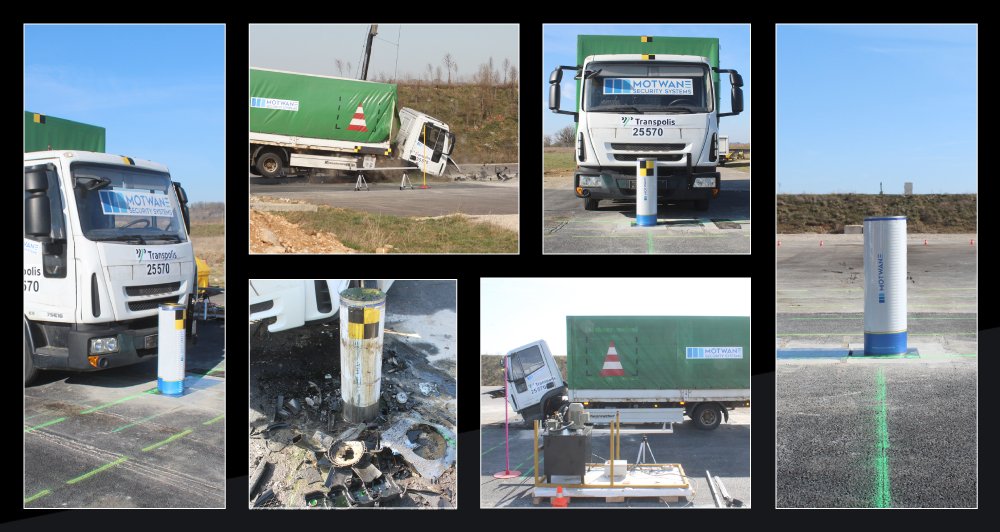Crash Rated Bollards: The Ultimate Defense Against High-Impact Threats
In today’s increasingly volatile world, the demand for high-security infrastructure has surged. Critical assets such as government buildings, embassies, airports, and data centers face ever-evolving threats, ranging from accidental collisions to deliberate vehicle-based attacks. Amidst this growing concern, crash rated bollards have emerged as a vital line of defense. These engineered barriers are not just physical deterrents; they are meticulously tested safety solutions designed to halt high-speed vehicular threats in their tracks.
Understanding Crash Rated Bollards
Crash rated bollards are specialized security posts engineered to withstand and stop vehicles traveling at high speeds. Unlike decorative or simple traffic control bollards, these are built for performance under extreme conditions. They are rigorously tested to specific standards that simulate real-world crash scenarios, ensuring reliable protection for high-risk environments.
These bollards are commonly installed in locations where vehicle impact could cause catastrophic damage or loss of life. Key deployment areas include:
- Embassies and consulates
- Government buildings and military facilities
- Critical infrastructure like power plants and airports
- Commercial hubs, banks, and financial institutions
- Data centers and communication facilities
By preventing unauthorized vehicular access, crash rated bollards serve as crucial anti ram bollards, helping mitigate threats like terrorism, ram-raiding, and accidental collisions.
Functionality and Importance in Threat Mitigation
The primary function of crash rated bollards is threat mitigation. Designed to stop vehicles ranging from passenger cars to large trucks, these systems utilize heavy-duty materials like reinforced steel, integrated foundations, and advanced energy-absorbing mechanisms.
When positioned strategically, anti crash bollards can safeguard perimeters, restrict unauthorized vehicular movement, and funnel traffic through secure entry points. In many installations, crash rated bollards are paired with access control systems, surveillance technology, and personnel to create a comprehensive security infrastructure.
Crash Rated Bollard Specifications:
What Makes Them Reliable?
The effectiveness of crash rated bollards is determined through standardized testing. One of the most recognized benchmarks in the industry is the ASTM F2656 standard. This rating system categorizes bollards based on the vehicle type, speed, and level of penetration after impact.
Key ASTM F2656 Ratings:
- K4: Designed to stop a 15,000 lb vehicle at 30 mph
- K8: Stops the same vehicle at 40 mph
- K12: Stops the same vehicle at 50 mph
Each of these crash ratings is backed by real-world crash testing data, helping buyers evaluate the level of protection they need. Other performance factors include foundation depth, material strength, retraction mechanism (fixed, removable, automatic), and recovery time after impact.
Crash Protection Bollards
Make a Difference?
The relevance of crash protection bollards extends beyond theoretical testing. Real-life incidents have proven their life-saving potential. For instance:
- Data Centers: High-value data hubs install crash tested bollards to prevent unauthorized vehicle access, which could lead to data theft or destruction.
- Retail Chains: To prevent anti ram raid bollards from halting smash-and-grab attacks, stores secure their entry points with heavy-duty bollards.
- Urban Infrastructure: City planners use crash rated barriers to protect pedestrian zones from accidental vehicle intrusions.
- Airports: With a mix of vehicular traffic and high footfall, airports are common sites for anti crash bollards, safeguarding terminals and sensitive operational zones.
In each of these examples, the deployment of crash rated bollards is not merely a precaution but a necessity to comply with international safety norms and local threat assessments.
Crash Tested Bollards
vs. Standard Bollards
It’s essential to distinguish crash tested bollards from regular or ornamental bollards. While both may look similar on the outside, their internal engineering and performance metrics are vastly different.
| Feature | Standard Bollards | Crash Tested Bollards |
| Purpose | Aesthetic/Traffic Control | High-Impact Vehicle Stoppage |
| Material | Basic steel or concrete | Reinforced steel, energy-dissipating systems |
| Testing | No formal crash tests | Tested under ASTM or equivalent standards |
| Installation | Surface mount | Deep foundation or retractable systems |
| Applications | Sidewalks, parking lots | Government sites, airports, banks, embassies |
This comparison highlights why opting for certified anti ram bollards is crucial when dealing with high-security zones.
Making the Right Choice for Your Security Needs
Choosing the right crash rated bollards depends on multiple factors:
- Threat level assessment
- Speed and weight of potential vehicle impact
- Aesthetics and urban design considerations
- Retraction mechanism (fixed, automatic, manual)
- Compliance with local or international standards
Consulting with a certified security integrator can help ensure that the specifications and placements meet your facility’s unique requirements.
Anti Ram Bollards
In an age where proactive security measures are paramount, crash rated bollards stand as a critical investment. They offer tangible, tested, and proven protection against vehicular threats. Whether you’re safeguarding a national embassy or a corporate headquarters, these crash protection bollards bring peace of mind and robust defense to your perimeter security strategy.
Don’t wait for an incident to prompt action. Integrate anti ram raid bollards and crash tested bollards into your security architecture today.
FAQs: Crash Rated Bollards
Q1. What are crash rated bollards made of?
Crash rated bollards are typically made of high-strength steel with internal reinforcement and sometimes filled with concrete or energy-absorbing materials.
Q2. Are crash tested bollards removable?
Some models are fixed, while others are designed to be retractable or removable based on access requirements.
Q3. How do crash rated bollards differ from anti ram raid bollards?
They are often the same. Anti ram raid bollards specifically focus on preventing ram-raiding attacks on buildings, while crash rated bollards cover a broader range of high-speed impacts.
Q4. Can crash rated bollards be used in urban settings?
Yes, many designs are available to blend with urban architecture without compromising safety or aesthetics.




